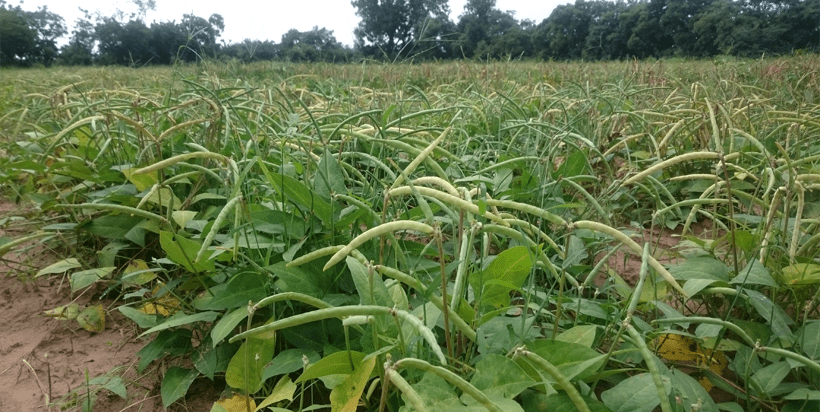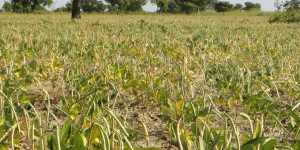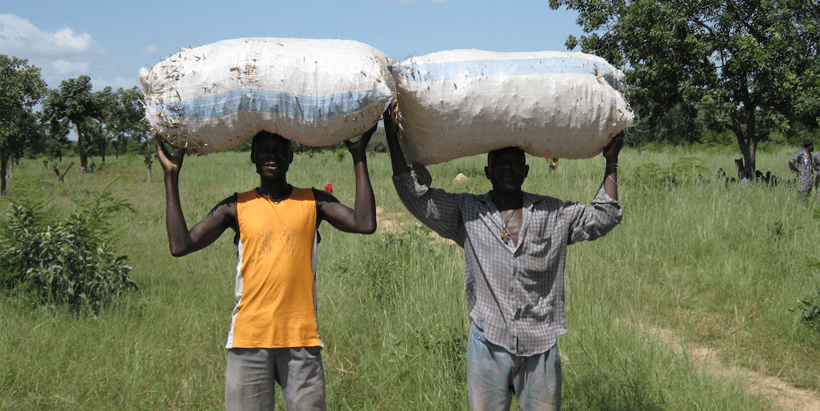Nigeria
11 August 2022
Cowpea, one of IITA mandate crops, is an important source of protein and livelihood for many people in West Africa. West Africa accounts for more than 80% of annual world production and Burkina Faso is the third largest producer of cowpea in West Africa. However, cowpea yields per unit area and its seed protein content must be increased to meet the protein demands.
 Cowpeas in a high-density plot in Burkina Faso.
Cowpeas in a high-density plot in Burkina Faso.
Researchers from IITA-CGIAR and Institut de l’Environnement et de Recherches Agricoles (INERA) recently carried out a study in Burkina Faso to establish a simple method for increasing cowpea yield and the protein content of seeds. The effects of top-dressing timing on cowpea yield and the seed nitrogen content were investigated to achieve this. The effect of the planting density on the cowpea yield in farmers’ fields was also investigated in three different regions of Burkina Faso.
During the investigation, three planting density plots—normal, high, and super high —were established in the different regions. The regions were characterized by their annual rainfall. The north region was semi-arid with an annual rainfall of 520 mm, the central region was semi-arid with an annual rainfall of 780 mm, and the south region was sub-humid with an annual rainfall of 1175 mm.

Cowpeas in a high-density plot in Burkina Faso.
The result showed that high-density planting and top-dressing during flowering could increase the yield and grain protein content of cowpea in different agroecological zones across different regions in Burkina Faso. Under such approaches, the yield significantly increased by as much as 214.5%, with an average value of 88.9%. Applying top-dressing when the plants started flowering increased the seed protein content by up to 24.4%.
The findings suggested that the cowpea yield can be easily improved, even when farmers have no access to fertilizer. Even if the cowpea yields for any individual farmers do not improve dramatically, the effects of high- and super high-density planting could greatly impact national or regional production.
The researchers advised farmers to evaluate the soil type, soil fertility, and varieties of cowpea they use in their locations to adapt to the developed techniques. They added that simple management practices could improve the income and nutritional status of populations through increased protein intake in developing countries.
 Farmers happy with high yielding cowpea in Burkina Faso.
Farmers happy with high yielding cowpea in Burkina Faso.
The lead researcher, Haruki Ishikawa, Plant Physiologist at IITA said, “Our findings could contribute to achieving stable and sustainable food production in West Africa.” This Activity is one of the achievements of the MAFF Japan project, supported by the Ministry of Agriculture, Forestry, and Fisheries, Japan.
Contributed by Favour Eleta